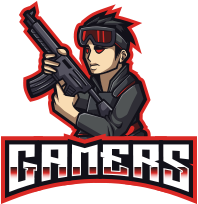Hollow Knight was an almost immediate sensation when it was released in 2017. Team Cherry kept up with updates, DLC, and ports to keep the game relevant. While it was planned as more DLC, Hornet’s side adventure soon turned into a giant game, and thus Hollow Knight: Silksong was first teased in 2019.
It’s been a long road to launch, but not the longest wait in history. That said, finally, in 2025, the game launched across several big platforms. It may have been several years since players engaged with the original game, so they may not know what is different about Hollow Knight: Silksong. Besides Hornet replacing The Knight, here are the biggest shifts, for better and worse.
How Healing Works
Silk Vs Soul
Health is always an important system in video games, and these two Metroidvanias do it differently. The Knight from Hollow Knight has a magical energy called Soul that will charge up after players attack enemies. Hornet in Hollow Knight: Silksong has Silk, which will fill up in the same way. There are statues and Hot Springs that can recharge The Knight’s Soul too, so Silksong is a bit more limiting. Special abilities and healing will use charges of the Soul and Silk meter.
In Hollow Knight, players can heal one health meter at a time, and one full Soul charge can grant three health nodes. Hornet’s Silk will heal three life nodes too, but the difference is that Silksong makes players heal three at once. Hornet’s healing animation is slightly faster, and it can be activated in the air without aid, which edges it out ever so slightly above Hollow Knight.
The Corpse Run
A Less Murderous Return
Both games borrow a lot from the Soulslike genre, especially when it comes to death. In Hollow Knight, players leave behind the game’s one currency, Geo, upon death. When players return to the corpse’s location, it will be animated and can fight back. The Knight’s Soul meter will be cracked until the copy is destroyed.
Silksong is more generous to players who keep dying, which will inevitably happen as it’s one of the hardest Metroidvanias in years. Hornet leaves behind a binding of stationary Silk, and once found, players will regain their lost currency, Rosaries. Shell Shards, the game’s other currency, will never be dropped, and Hornet’s Silk meter is never damaged in the process. Resetting at benches can still be taxing at times, but at least Hornet doesn’t have to fight herself.
Players will gain power for The Knight the further they get in Hollow Knight, from an energy blast to a downward strike that can shake the Earth. These attacks use Soul energy, and aside from The Knight’s Nail, these are his only types of attacks. Hollow Knight: Silksong adds a new gimmick to combat via Tools.
Players can get Tools for Hornet in Silksong from vendors, by completing quests, or by finding them in the world. For example, a great, useful Tool players can find early is called the Sting Shard. When tossed out, it will trigger an explosion of blades if enemies touch it. While they won’t hurt as much as Hornet’s Needle, Tools are a nice addition to Silksong’s gameplay.
Hornet Can Talk!
More Than A Shift In Protagonists
The Knight didn’t even get a proper name, let alone a voice, in Hollow Knight. Like many games, the protagonist was silent, and NPCs simply talked to him rather than talking with him. What makes Hollow Knight: Silksong more engaging is that Hornet can talk.
She’ll have real conversations with NPCs, and the dialogue can be both informative and entertaining. Silksong doesn’t have voiced dialogue, so that’s something that hasn’t changed, but it’s still a step up to have a non-silent protagonist in a game sequel. Maybe Team Cherry could have voiced dialogue in their next game, a decade from now.
Bonding With Your Map Maker
Shakra Is There By Your Side
Unlike most Metroidvanias, which naturally map the game as players progress, Hollow Knight introduced a different system. Before players could know where they were, they would need to find a mapmaker, Cornifer, in every biome they visited. He also sold only maps, whereas his wife, Iselda, sold other accessories like icons. It was something Metroidvania fans had to get used to, but it was an intuitive system.
Hollow Knight: Silksong improved the map system, which coincides with Hornet’s ability to talk. There is a new mapmaker, Shakra, who appears in biomes to sell her maps and accessories to Hornet without the assistance of another. She’s a more active character in the story too, with the bond between her and Hornet deepening as the game progresses. Cornifer and Iselda were memorable characters in Hollow Knight, but this was a good change for Silksong.
Quests Are Actually Quests
Your Wish Is My Command
Hollow Knight had quests, but they weren’t marked as they typically would be in most games that have them, like with menus. Hollow Knight: Silksong makes quests more apparent via the Wish system. Upon talking to NPCs or going to a bulletin board, Hornet can tackle several Wishes, which will be marked in a separate menu for easy navigation.
The details of some of these quests can be vague, and they won’t guide players to exact locations, but it’s still a big change over Hollow Knight. That said, some may prefer the obtuse nature of Hollow Knight’s quest design, the same way some RPG fans prefer to play their games with quest markers turned completely off. No matter how old fans feel, new players will certainly appreciate the Wish system in Silksong.

Hollow Knight: Silksong
- Released
-
September 4, 2025
- Developer(s)
-
Team Cherry
- Publisher(s)
-
Team Cherry
- Engine
-
Unity
- Franchise
-
Hollow Knight
- Number of Players
-
Single-player
#Hollow #Knight




